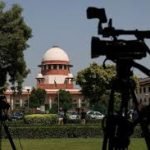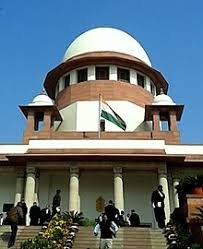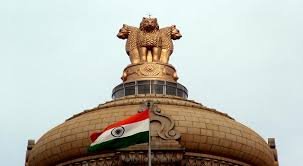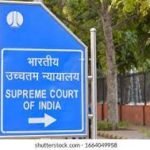This appeal concerns the grant of leave encashment benefit to Dr. Mool Raj Kotwal, a medical advisor and chief consultant, who retired from Sikkim State services on 31 January 2005, having attained the age of superannuation (58 years)…. He was subsequently re-employed in the same post for two years from 1 February 2005 to 31 May 2005, which was later extended until 28 May 2019. The State of Sikkim initially sanctioned his leave encashment and directed payment on 31 May 2019. However, on 21 May 2020, the State Government cancelled the sanction for the benefit of leave encashment during his re-employment period, citing a ‘clarificatory order’ dated 27 February 2020 (Office Memorandum No. 4528/GEN/DOP)…. This clarification stated that a maximum of 300 days of leave encashment was inclusive of the period earned during extension of service/re-employment. Dr. Kotwal challenged this cancellation through a Writ Petition, which was allowed by a Single Judge and upheld by a Division Bench of the High Court of Sikkim1…. The State of Sikkim then filed these appeals, arguing that the respondent was not entitled to the leave encashment benefit for the period of re-employment1….
Law Involved. The key legal provisions involved are the Sikkim Government Service (Leave) Rules, 1974, specifically:
Rule 36 (Leave Encashment on Superannuation): This rule allows a government servant, on attaining the age of superannuation (58 years), to encash leave up to a maximum of 300 days…. The benefit is described as a “cash equivalent to leave salary at his credit for leave encashment maximum upto 300 days”.
Rule 32 (Leave during Re-employment): This rule specifies that a government servant re-employed after retirement is subject to the provisions of these rules…. It is interpreted to mean that a re-employed government servant does not continue to earn leave benefits beyond 300 days available at retirement. The language of Rule 32 is “mere applicability of Leave Rule 32 would not ipso facto bring an employee within the connotation ‘government servant’ to whom Leave Rule 36 applies”.
Rule 17 (Earned Leave): Defines earned leave and its calculation.
Rule 31 (Extension of Service): Governs earned leave during extension of service, stating that a government servant whose service is extended may be granted earned leave subject to a maximum of 300 days including the extended period of service.
Rule 102 (Re-employment): This rule dictates that re-employment is determined by the Government and defines the pay scale during re-employment. It also states that the re-employment service is prescribed in Rule 102 of Service Rules, and Rule 32 would not ipso facto bring an employee under Rule 36.
Rule 98 & 99A (Compulsory Retirement): These rules deal with the date of retirement on superannuation and provisions for compulsory retirement….
The Supreme Court deliberated on whether the leave encashment benefit available at retirement under Rule 36 also applies to the period of re-employment, especially when such re-employment is treated as a continuation of service or a new engagement.
The appellant (State) argued that Rule 36 prescribes leave encashment maximum up to 300 days on attaining superannuation, and employees re-employed after retirement were not entitled to the same benefit for the re-employment period. They emphasized that the clarificatory order of 27 February 2020 cancelled the benefit.
The respondent (employee) contended that the cancellation was without notice, violating natural justice. He argued that Rule 32 applies to re-employed government servants and that both Rule 32 and Rule 36 apply to employees to whom Leave Rules are applicable. He also pointed out that the High Court had rightly dealt with the interplay of Rules 32 and 36.
The Court found that the benefit of leave encashment is a legal entitlement that exists within the framework of service law and the welfare of the employee, allowing employees to receive a monetary benefit in exchange for leave they have earned but not taken during regular employment. It noted that the State’s clarificatory order (27.02.2020) was issued after the initial sanction for leave encashment (31.05.2019) and relief from re-employment (28.05.2019), thereby cancelling a benefit already granted without affording due opportunity or violating natural justice.
The Court distinguished between ‘extension of service’ (Rule 31) and ‘re-employment’ (Rule 32 and 102)…. While Rule 31 explicitly includes leave earned during extension of service for the maximum 300 days encashment, Rule 36 applies at the point of retirement. The Court reasoned that a government servant who retires and then is re-employed should not be denied the leave encashment benefit they were entitled to at the time of their initial retirement. The Court stated that the “spirit of Rules 31, 32 and 36 of Leave Rules” indicates that the language of Rule 36 makes it clear that unutilized earned leave in credit on the date of retirement, including extension of service up to 300 days, is granted. It clarified that Rule 32 and 36, read together, do not prohibit the re-employed employee from receiving the benefit of leave encashment maximum up to 300 days at the time of initial retirement, as this is a “statutory right based on the principle of deferred compensation”. The Court concluded that the interpretation of Rule 32 by the State, to deny benefit to re-employed persons who had already availed 300 days of leave, was not countenanced by the Division Bench. The High Court’s view was that Rule 36 is an independent sphere and that the benefit cannot be misjudged or misinterpreted.
Suresh Kumar V. State Of Haryana And Others
Supreme Court: 2025 INSC 550: (DoJ 23-04-2025)








